Alec had his re-check appointment today; this was the first time he was back at Animal Care Center since he was discharged on 2/21. My wonderful friend April helped me load him into my van, which we did by sling walking him up a ramp, and the nurses wheeled him inside on a gurney when we got there. We saw the neurologist who performed his two surgeries, Dr. Lisa Tieber, and the canine rehabilitation specialist, Juli Dell’Era. Although I had sworn he felt it a few times when I pinched his tail recently, Alec would not react to pinches from Dr. Tieber so his prognosis was deemed “poor for return to normal function” based on his "persistent absence of deep pain."
Today marks four weeks after his surgery and I know that most dogs who are going to regain deep pain perception (DPP) do so within a few weeks of surgery. Still, I also get the feeling from the studies I have read that there may not be a preponderance of long-term data. In one article I read* the authors studied 70 dogs with intervertebral disk disease (IVDD) and of this 70, six were euthanized at the time of the initial examination at the owner’s request and nine more were euthanized within one month after surgery. Although seven of these nine were euthanized because of suspected or confirmed ascending myelomalacia (a terminal condition in which the paralysis spreads throughout the body), the remaining two dogs were euthanized within three weeks after surgery at their owners’ request because of a lack of improvement. So in just this one study eight of 70 dogs (approximately 12%) were euthanized very early on either before surgery or soon after because they had not improved. Combined with the fact that large dogs represent the minority of cases of IVDD and take longer to recover, I would surmise that there is not a ton of data out there about dogs like Alec. The doctor herself said she has seen amazing things happen with physical therapy, so I am going to try everything for him.
Now, there is this phenomenon called “spinal walking” or “reflex walking,” which I think I mentioned in another entry. Without regaining DPP it is unlikely (impossible?) that a dog will recover normal function – meaning conscious control of their back legs. However, some dogs develop reflexes that allow them to walk without knowing they are doing it. I guess it relies mostly on muscle memory rather than conscious control. Dogs who develop this ability walk with a “drunken” or wobbly gait – not quite normal – but it’s enough to get them around. I asked Juli, the rehab therapist, if she had ever seen this ability develop in big dogs and she said she had a Doberman that became a “spinal walker.” So it is not impossible in large dogs. The study I referenced above included a few large breed dogs, including one German shepherd, but the vast majority were dachshunds and other small breeds, so it’s hard to draw conclusions based on Ali’s size, but in this study 37 of the remaining 64 dogs developed DPP and the ability to walk. Among the dogs that did not develop DPP, four were euthanized 2, 4, 9, and 36 months after surgery, again, due to a lack of improvement and one dog died as the result of an attack by another dog 6 months after injury (how awful!).
Of the remaining dogs, seven regained the ability to walk despite a lack of DPP (although the authors don’t call it this, I believe they are describing “spinal walking”). They don’t differentiate the breeds of these seven dogs so I don’t know whether any large breeds were represented in this number. All seven dogs who regained motor function had a voluntary tail wag one month after injury, and Alec started wagging his tail when I walked in the room about 2-3 weeks after surgery. The fact that I noticed he wagged his tail is what prompted me to hunt down this study, which has been very informative and also given me some hope that even with a lack of DPP, Alec could one day walk. The authors of this study believed the voluntary tail wag was a good prognostic indicator: “Persistent loss of DPP did not preclude recovery of motor function, and dogs that did recover motor function developed a voluntary tail wag within 4 weeks after the injury” (Olby et. al., 2003, p. 768).
Additionally, according to this study, the average time for dogs without DPP to develop motor function was 9 months. So whatever happens, this is going to be a long road. It also made me realize I absolutely could not go back to my place in San Francisco. Even though I knew this was likely, I was holding onto hope that somehow it could work and we could go home…but it’s impossible. After the appointment I told my roommates I am definitely moving out. We are all sad, but this is the only option right now. Besides the stairs in my place in SF, it makes sense for us to be up here in Sonoma County, closer to Alec’s doctors and he will be doing his physical therapy up here too. I guess I had known this for of a couple weeks, but it became final in my mind today. And today was the day I started saying it out loud. Good-bye San Francisco.
Something kind of cool: During the re-check exam, even though Alec did not demonstrate DPP, Dr. Tieber noticed that he started peeing on his own when we stood him up. She said “look he’s doing that on his own! I’m not touching him.” And she seemed excited about this fact. She asked if he had done this at home and I said I didn’t know; I never take my hands off his bladder when he starts peeing! I get so excited when I find the spot I don’t want to ease the pressure until he stops. She said this means he is perhaps developing a “reflexive bladder” where they can go on their own somewhat but still need to be expressed. I told her about our ongoing problems with him pooping in his bed, especially overnight, and trying to squat (which he can’t do because his legs don’t work) but only flattening it and rubbing it into his fur and bedding (gross, I know – but try cleaning it up everyday!) and she suggested walking him outside in a sling for 5 minutes after his meals. She said for some dogs just moving and being outside stimulates them to go to the bathroom. I am skeptical but I will try it!!
Finally, I really like Juli, the rehab specialist. She is very knowledgeable and also really nice. She said she treats all patients as if they will walk again so the therapy will be the same for Alec whether he has DPP or not. Like I mentioned above, Dr. Tieber said she has seen amazing things happen with physical therapy…so we have to try, right? If we forego physical therapy, it is virtually guaranteed nothing will change, but with therapy there is a chance we could see improvement. Another neurologist said early on after Alec’s surgery, in response to my question about physical therapy, “Well, if he has no DPP there is no point in doing physical therapy.” Now that I have educated myself some more, this doesn’t make sense to me. Even without DPP, according to the study I keep referencing, some dogs recover motor function. I asked Dr. Tieber why he would say that and she just said “well, we have different philosophies about that.”
The next step is to get Alec measured for a cart (doggie wheelchair). Juli said they can be great rehab tools as well a means of mobility. It will be awhile before he can really run around with his wheels since he is still recovering from surgery, but in the interim we can use it for his rehab exercises. Currently I am doing physical therapy with him at home a few times a day, including passive range of motion (PROM) and standing exercises to get him to bear weight on his back lets. The latter are hard to do by myself (wiggly, heavy German shepherd!) and Juli said the wheelie cart will really help with this. The problem is Alec is starting to overcompensate, putting too much weight on his front legs (unfortunately I wasn’t discouraging this because I just thought he was getting stronger up front – woops), and he is already developing arthritis so it is very important he distribute his weight more evenly. She said the cart will really help with this, balancing out his weight. The measurements for the cart have to be very precise (if you make a mistake in measuring and the cart doesn’t fit, you have to pay for a whole new one to be made! And they are around $600) so she wants to come to us to do the measurements so he will be as relaxed as possible. We will do that this weekend. Oh, and I suspect he has a urinary tract infection (malodorous urine) so we started a urine culture on that. We will see. I came home from this hours-long appointment with my head buzzing. I feel like it was a lot of information to take in all at once!
As an aside, Alec has gotten very “vocal” since this all happened, barking at everyone much more than he used to, louder and without stopping when I tell him to. He used to bark occasionally when he heard something (or saw another dog across the street), but nothing like this persistent barking. I think he is overcompensating because he can’t move and feels vulnerable. Well, today I left the exam room to use the restroom and when I came back Dr. Tieber walked in and he started barking like crazy. She told me she had come in only a moment before when I was not there and he hadn’t made a sound! Apparently there is a protective element to his barking, which I did not know because I am always there with him when he barks so I just assumed he did it all the time. Either way, I will have to figure out a way to get it under control. He was reasonably well-trained before this happened, but now it’s almost like I have to start all over again with certain things…
* Olby, Natasha, et. al., 2003, “Long-term functional outcome of dogs with severe injuries of the thoracolumbar spinal cord: 87 cases [1996-2001],” JAVMA, Vol. 222, No. 6, March 15.
Tuesday, March 11, 2008
First re-check appointment:
Subscribe to:
Post Comments (Atom)

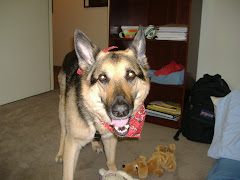


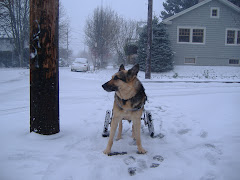
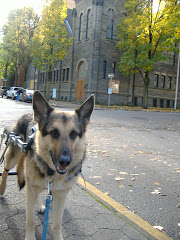
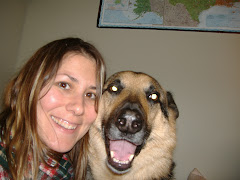
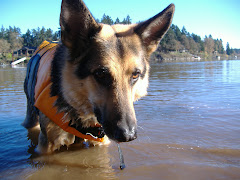
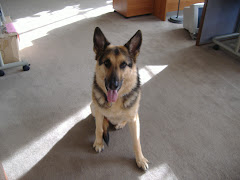
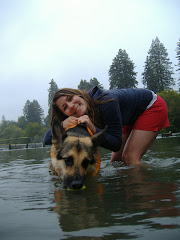_9_19_08+030.jpg)
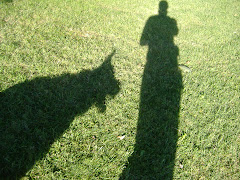
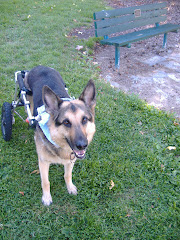
_9_19_08+045.jpg)
_9_19_08+001.jpg)
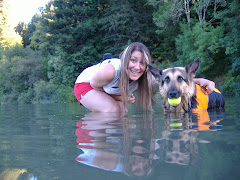
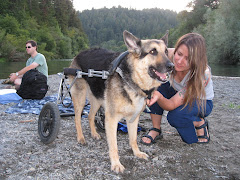
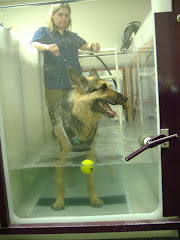
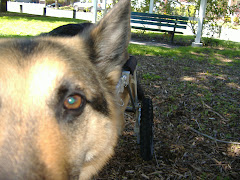
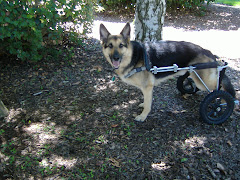
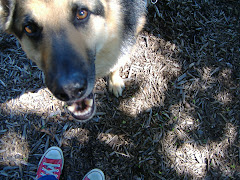
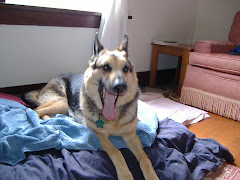
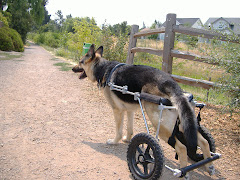
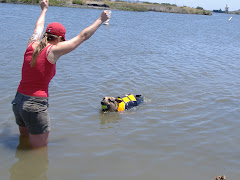
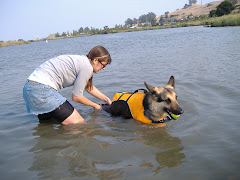
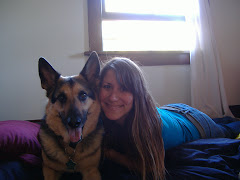
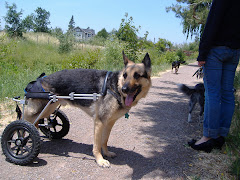
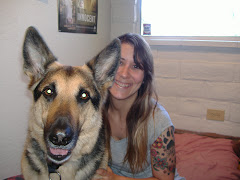
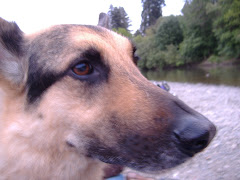
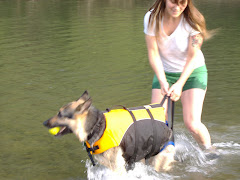
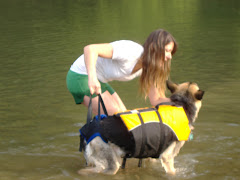
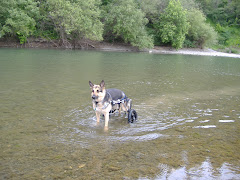
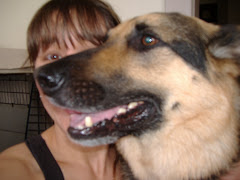
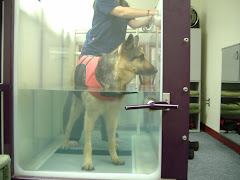
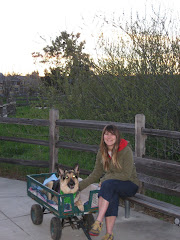
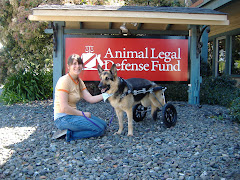
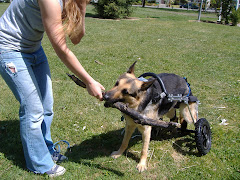

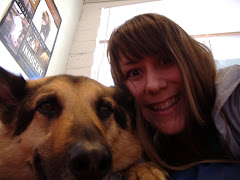
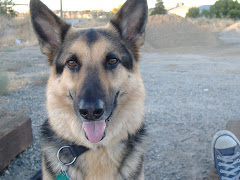
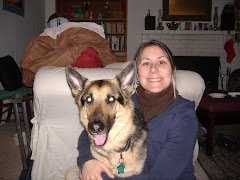
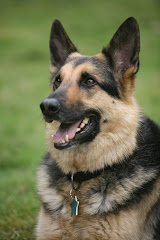
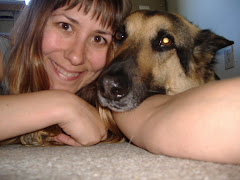
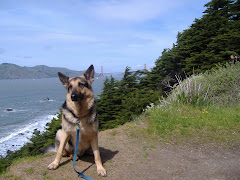
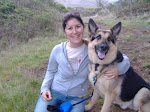
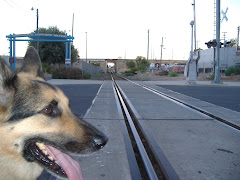



No comments:
Post a Comment